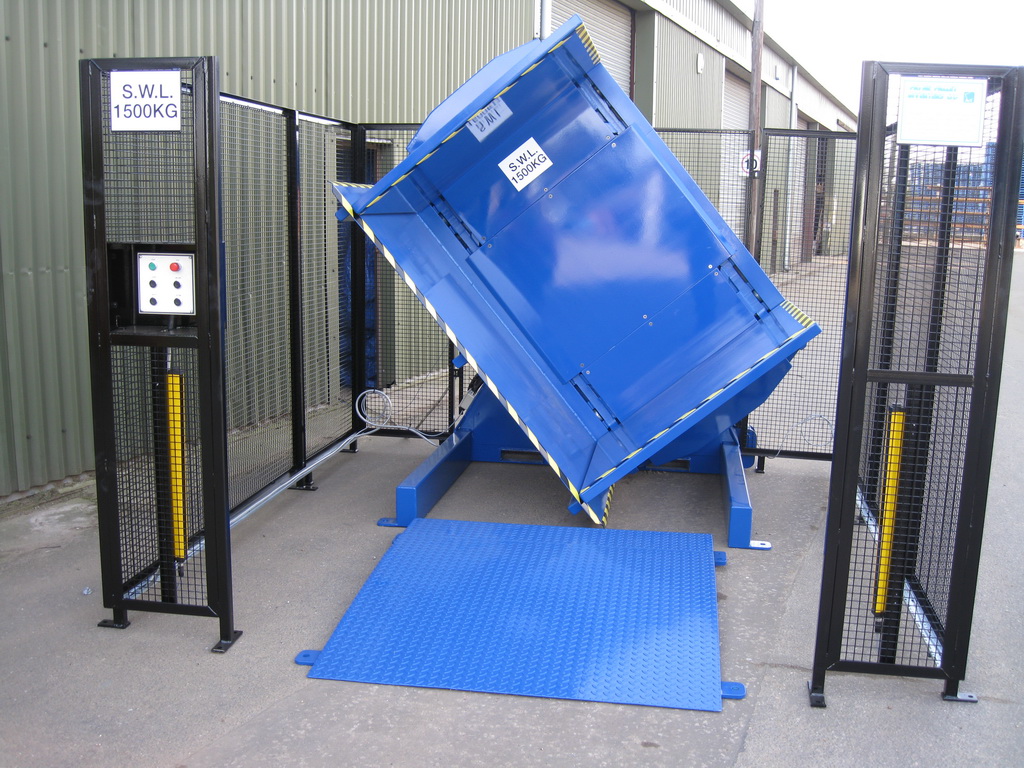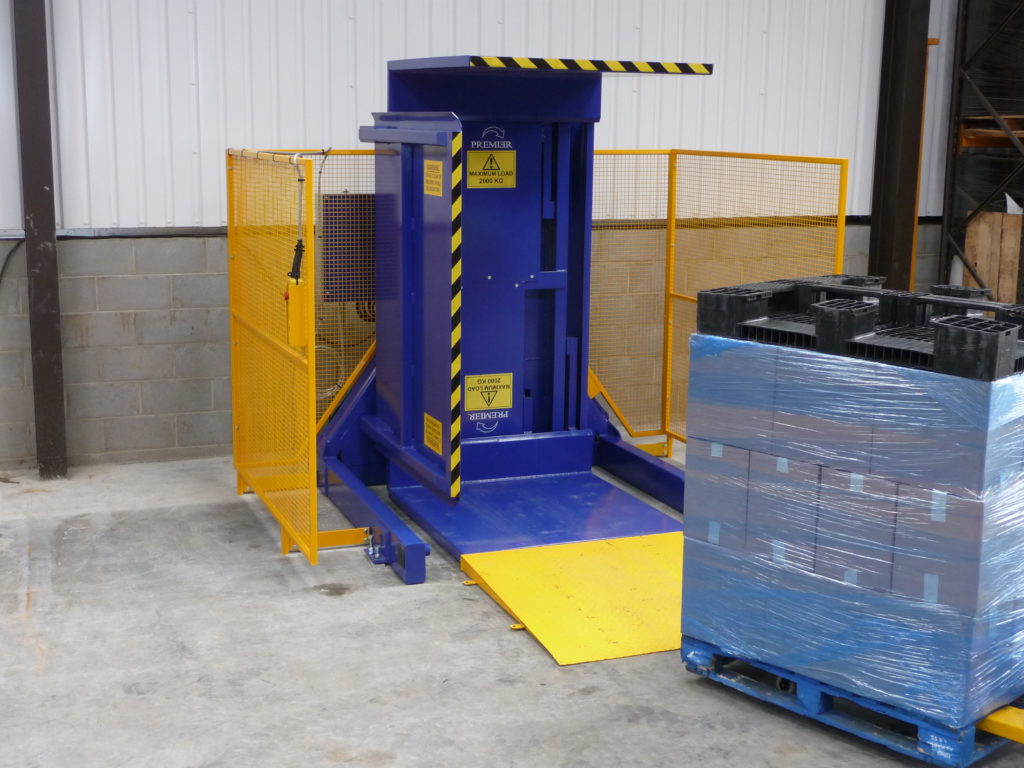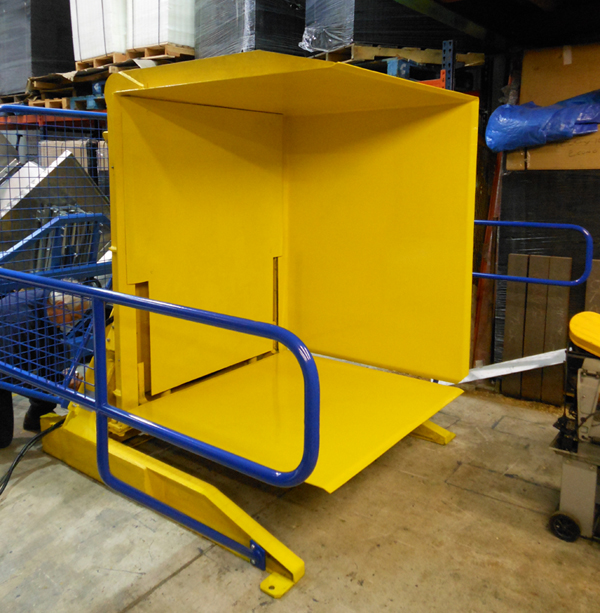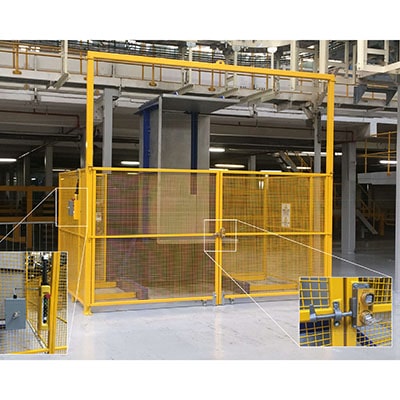Pallet Inverter: How to Handle Moisture-Sensitive Crop Pallets Safely?
When you manage a large-scale industrial operation, every detail matters. You might have the best production equipment in the world, but a single, seemingly minor issue can cause major disruptions. I've seen it happen. A shipment of high-value goods, worth tens of thousands of dollars, gets rejected. Not because of the product itself, but because of the cheap wooden pallet it was sitting on. Moisture from a damp pallet can creep into your product, causing rust on steel coils or contamination in other sensitive materials. This single point of failure can lead to financial loss, damaged customer relationships, and logistical nightmares that ripple through your entire operation.
A pallet inverter is the most effective solution for handling moisture-sensitive goods safely. This machine securely clamps your product load, rotates it up to 180 degrees, and allows you to easily and quickly replace a problematic pallet with a clean, dry, or in-house standard one. This simple, automated process eliminates the risks associated with wet or damaged pallets, protects your product integrity, and prevents costly damage without requiring intensive manual labor.

You might see the immediate benefit of protecting your goods. But a pallet inverter is more than just an insurance policy against moisture damage. It's a strategic tool that can impact your bottom line, integrate with your existing infrastructure, and improve overall plant safety. For a forward-thinking leader, the real question is how this piece of equipment fits into the bigger picture of operational excellence. Let's explore how a pallet inverter can be a key part of your strategy to reduce costs, modernize your factory, and ensure reliable performance.
How Can a Pallet Inverter Reduce Operational Costs and Improve ROI?
You are constantly looking at the numbers. Every investment must be justified with a clear return. It's easy to see the big expenses, like energy or raw materials. But the small, hidden costs of inefficiency can be just as damaging to your profit margins. Think about the costs associated with a bad pallet: the labor hours spent by two or three workers manually restacking a load, the risk of them injuring their backs, the potential for dropping and damaging the product, and the disposal fee for the unwanted pallet.
A pallet inverter directly reduces operational costs by transforming a slow, risky manual task into a fast, safe, and automated process. It cuts labor costs by allowing one operator to do the work of several in a fraction of the time. It minimizes product damage, which lowers your scrap rate and improves customer satisfaction. It also significantly reduces the chance of workplace injuries from heavy lifting, which can lower your insurance premiums and prevent lost workdays. This turns a cost center into a highly efficient part of your operation, delivering a return on investment you can see in weeks, not years.

A Practical Breakdown of Cost Savings
As an engineer and factory owner, I always focus on tangible data. Let's move beyond concepts and look at the real-world financial impact. When we analyze the process of repalletizing, the savings become very clear. The initial investment in a machine is quickly offset by the continuous, daily savings it generates. This isn't just about preventing moisture damage; it's about fundamentally optimizing a common logistical task.
To illustrate, consider the direct comparison between a manual process and one using a pallet inverter. The differences are not minor; they represent a significant shift in resource allocation and risk management. For a high-volume facility, these savings scale up dramatically.
| Cost Category | Manual Pallet Exchange | Process with Pallet Inverter | Financial & Operational Impact |
|---|---|---|---|
| Labor Costs | High. Requires 2-3 workers. Can take 10-15 minutes per pallet. | Low. Requires 1 operator. Takes about 1-2 minutes per pallet. | Drastic reduction in labor hours dedicated to non-value-added tasks. Frees up staff for more critical duties. |
| Product Damage | Moderate to High Risk. Dropping, shifting, and contamination during manual transfer. | Minimal Risk. The load is securely clamped throughout the entire process. | Reduces write-offs and rejected shipments. Protects brand reputation and customer trust. |
| Workplace Safety | High Risk. Back strains, repetitive motion injuries, and crush hazards are common. | Low Risk. The machine does all the heavy lifting, eliminating ergonomic risks. | Fewer workplace accidents, lower insurance costs, and improved employee morale. |
| Pallet Management | Inefficient. Incoming pallets are often a sunk cost or require disposal fees. | Efficient. Allows for easy replacement with standardized, lower-cost in-house pallets. Incoming pallets can be returned, reused, or sold. | Creates a new opportunity for cost avoidance or even revenue generation from pallet sales. |
Calculating the ROI for a High-Capacity Plant
For a plant with a significant output, like a steel mill producing 2 million tons annually, even a small percentage of product loss translates into a massive financial hit. If just 0.1% of your product is damaged or delayed due to pallet issues, the cost can easily run into hundreds of thousands of dollars. The ROI of a pallet inverter isn't just about labor savings; it's about protecting revenue.
A pallet inverter contributes directly to your goal of lowering overall operating costs. I remember a client in the steel industry who was skeptical. He saw it as just another machine. But we sat down and did the math based on his operation. We calculated the labor savings, the reduction in damaged steel coils from rust spots, and the money he could make by selling the high-quality wooden pallets his suppliers were sending him. The payback period was less than a year. The machine wasn't an expense; it was an investment that paid for itself and then started generating profit. That is the kind of practical, measurable result that I believe in.
How Does a Pallet Inverter Integrate with Aging Equipment and Drive Digitalization?
You have production lines that have been running for over a decade. They are reliable workhorses, but they weren't built for today's digital world. The thought of integrating new technology into an aging infrastructure can seem complex and disruptive. You might worry that adding a modern machine will create a technology island, disconnected from your older, proven systems.
A pallet inverter is designed to be a bridge, not an island. It can integrate seamlessly into your existing material flow, acting as a modern checkpoint between your legacy equipment and your future goals. It can be installed as a standalone unit fed by forklifts, or it can be connected directly to your existing conveyor lines. More importantly, a modern pallet inverter is equipped with a PLC and can be fitted with IoT sensors. It automatically captures valuable data—cycle times, pallet counts, fault codes—and feeds it directly into your Manufacturing Execution System (MES) or data platform. This allows you to start your digitalization journey with a practical, high-impact application without replacing your entire line.

Bridging the Mechanical and Digital Worlds
Integrating new technology shouldn't require a factory overhaul. The pallet inverter is a perfect example of strategic, incremental modernization. Imagine your current setup: a reliable, older packing line wraps your steel coils. The coils then move to a staging area where they wait for shipping. This is a common workflow, but it has gaps in visibility and efficiency.
You can place a pallet inverter right at the end of that existing packing line. The wrapped coil comes off your old line and moves directly into the inverter. The machine performs the pallet swap in under two minutes, replacing the standard wooden pallet with a specialized, rust-preventing plastic pallet or a customer-specified one. The product then proceeds to an automated storage or shipping lane. The inverter acts as a "translator" between your old and new systems. It doesn't disrupt the old line; it enhances its output by adding a critical quality control and standardization step. This single machine introduces automation and data collection into a previously manual process, giving you a powerful new control point in your operations.
Data Points for a Smarter Factory
Your goal to deploy MES and big data platforms requires one crucial ingredient: accurate data. A pallet inverter is an excellent source of clean, automated data that was previously difficult or impossible to collect. This data provides real-time insights that help you manage your plant more effectively and move closer to your goal of total production visualization.
| Data Point from Inverter | How It Supports Digitalization | Impact on Your Goals |
|---|---|---|
| Cycle Time Per Load | Measures the exact time taken for each pallet exchange. | Helps you identify bottlenecks and optimize material flow, contributing directly to achieving 95% equipment uptime. |
| Pallet Count | Automatically counts every pallet processed. | Provides accurate, real-time inventory data for both incoming and outgoing pallets, improving supply chain management. |
| Fault/Error Codes | The PLC logs any operational issues or sensor faults instantly. | Enables predictive maintenance by spotting trends before they cause a breakdown. This is key to preventing unscheduled downtime. |
| Load Weight (with optional scale) | Verifies the weight of the load during the exchange process. | Acts as a final quality control check, ensuring shipping accuracy and preventing disputes with customers. |
When I started my own factory, we had to collect this kind of data with clipboards and stopwatches. It was slow and full of errors. Today, a machine like a pallet inverter can feed this information directly into your central system, error-free, every minute of the day. It's a foundational step in building a data-driven operation.
What Safety and Maintenance Features Ensure High Uptime?
You've dealt with aging equipment. You know the pain of unexpected breakdowns and the scramble to get a critical production line back up and running. When you invest in new equipment, your biggest concern is reliability. You need a machine that works, day in and day out, without becoming another maintenance headache. A breakdown in your packaging or shipping area can cause a bottleneck that paralyzes your entire plant, jeopardizing delivery commitments and damaging your reputation.
Modern pallet inverters are engineered specifically for reliability and safety to ensure high uptime. Look for machines built with a heavy-duty steel frame, robust hydraulics or reliable electric drives, and comprehensive safety systems. Features like full-perimeter safety fencing, light curtains that immediately stop the machine if an operator enters the area, and pressure-relief valves are non-negotiable. For maintenance, the design should prioritize simplicity. Look for easy access to motors and pumps, centralized lubrication points to simplify daily checks, and a PLC with built-in diagnostics. These features don't just make the machine safer; they make it easier to maintain, which is the key to achieving your goal of 95% uptime.

Essential Safety Features for a Heavy-Duty Environment
In a steel mill, safety is not just a policy; it's a fundamental requirement. The environment is demanding, and the loads are heavy. The safety systems on a pallet inverter must be more than just a checklist; they must be robust and foolproof. When we design machines for industries like yours, we build them to a higher standard.
- Physical Guarding: The machine must be enclosed in heavy-duty safety fencing with interlocked gates. If a gate is opened, the machine stops immediately. This prevents any possibility of a worker accidentally entering the operational zone.
- Light Curtains: These photoelectric safety barriers create an invisible wall of light at the entrance and exit of the machine. If a person or forklift breaks the beam while the machine is in motion, the cycle halts instantly. This is crucial for areas with mixed traffic of people and equipment.
- Hydraulic Load-Holding: For hydraulic models, we use load-holding or pilot-operated check valves on all clamping and lifting cylinders. If there is a sudden loss of hydraulic pressure or a power failure, these valves mechanically lock the cylinder in place, preventing the load from shifting or dropping. For a multi-ton steel coil, this feature is absolutely critical.
- Emergency Stops: Multiple, easily accessible emergency stop buttons should be placed around the machine so that anyone can shut it down instantly from any position.
Designing for Maintenance, Not Just for Repair
There is a big difference between a machine that is easy to repair and one that is designed for easy maintenance. My philosophy has always been to focus on the latter. Repair happens after a failure. Maintenance prevents the failure from happening in the first place. This is the only way to achieve true production stability.
- Accessibility: We design our equipment so that key components like the hydraulic power pack, electric motors, and control panel are easy to access. Your maintenance team shouldn't have to disassemble half the machine just to check the oil level or inspect a valve.
- Standardization of Components: As a factory owner, I know the frustration of trying to source a proprietary part from overseas. That's why we use high-quality, internationally recognized components from brands like Siemens, Schneider, or Parker. Your own team is likely already familiar with them, and spare parts are readily available from local suppliers. This dramatically reduces potential downtime.
- Predictive Maintenance Capabilities: The PLC in our inverters does more than just run the machine. It tracks data that predicts future maintenance needs. It can monitor motor current, hydraulic pressure, and total cycle counts. We can help you set up alerts in your system, for example: "After 10,000 cycles, schedule a hydraulic filter change." This moves you from a reactive "fix it when it breaks" model to a proactive, data-driven maintenance strategy, which is the core of hitting that 95% uptime target.
Beyond the Machine: Choosing a Partner, Not Just a Supplier
I remember when I was starting my own factory. Every major equipment purchase felt like a huge gamble. It wasn't just about the price tag or the technical specifications on a piece of paper. It was about the people behind the machine and whether I could trust them to support me not just on the day of sale, but for years to come. A machine is a tool, but a partner is an asset. In an industry as demanding as yours, you need a partner.
A true partner understands that your steel mill is not the same as a food distribution center. They will ask about the specific challenges of handling heavy, concentrated loads like steel coils. They will want to know about your current workflow, your pallet types, and your long-term goals. They will then work with you to customize a solution. For example, the clamping mechanism for a 15-ton steel coil needs to be designed differently than one for a pallet of boxes to ensure it holds securely without damaging the product. A supplier sells you what they have. A partner builds you what you need.
This partnership must extend beyond the design phase. It should include support for layout planning to ensure the machine fits perfectly into your facility. It should include installation supervision and hands-on training for your operators and maintenance teams. And critically, what happens after the sale? Can they provide remote diagnostic support by accessing the PLC from their office to help your team troubleshoot a problem? This is the kind of full-process support that separates a vendor from a strategic ally.
At SHJLPACK, this is the core of our mission. My journey from a young engineer on the factory floor to the owner of a successful machine-building company was made possible by the opportunities this industry gave me. Now, my goal is to give back by sharing that knowledge. We don't just want to sell you a pallet inverter. We want to be your partner, helping you integrate it in a way that solves your challenges with energy costs, aging equipment, and market pressures. We are here to help you turn those challenges into opportunities for growth and efficiency.

Conclusion
A pallet inverter is more than a machine; it's a strategic tool to cut costs, boost safety, and advance your factory's digital transformation. Choose the right partner to succeed.



